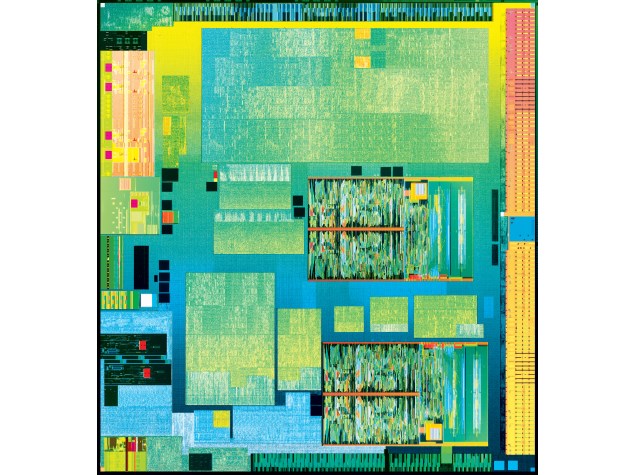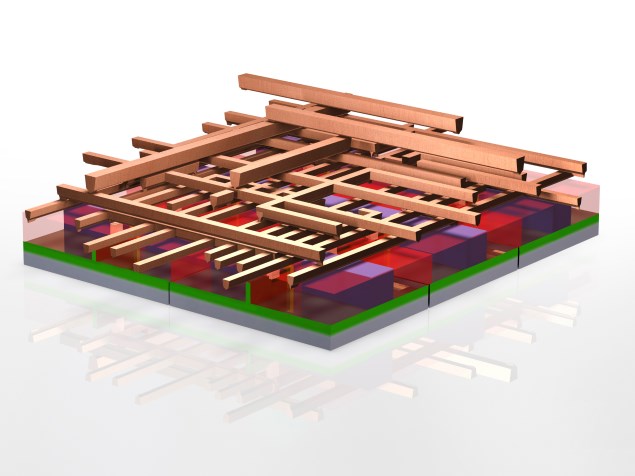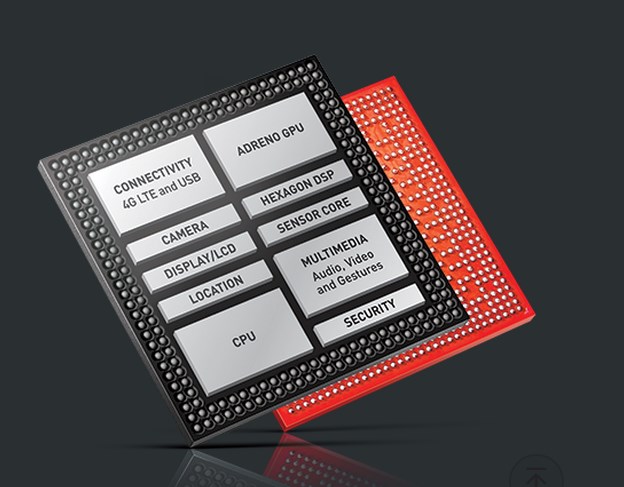In the last few years, the term "system-on-chip" (SoC) has been
thrown around quite a bit, yet there is a lot of confusion around what
an SoC is in the first place. Within any computer system, there are
multiple components to handle different processing tasks and allow all
the hardware and software to interact. Over the years, technology and
manufacturing advances have allowed these components to shrink while
becoming more powerful, reducing a large number of chips with
specialised purposes to fewer ones that handle multiple functions. In
short, an SoC is the ultimate level of integration - when all parts and
functions of a system can be combined into a single chip.
In the
PC space, separate components were all plugged into a motherboard - for
example a sound card, a graphics card, and controllers for hardware.
Today, most of these can been condensed into one or two chips (often
referred to as a chipset). Even so, many people still use standalone
components when high performance is the priority or there is a specific
need for something beyond the chipset's usual capabilities.
In the
world of mobile devices, efficiency in all forms is of paramount
importance, whether it's power or space. As smartphones emerged and took
on more demanding functionality, manufacturers have moved to create
single chips with multiple complex functions: the CPU, the GPU, memory
and storage controllers, cache memory, voltage regulation modules, and
often wireless communications as well. In this way, battery life,
thickness, weight, and manufacturing costs can all be optimised.

It's
worth noting that most smartphone or tablet SoCs don't truly qualify
for this title, since RAM and secondary storage is still external to the
integrated processor. There also other auxiliary sensors along with
chips for more complex or power-hungry functions that don't make it to
the main chip itself.
Some of the microcontrollers found in
industrial and embedded devices are true SoCs, with the microprocessor,
controllers, RAM, ROM and communications blocks integrated onto the same
die.
Usually in SoC discussions, the key things people talk about
are the CPU, GPU and manufacturing technology. In the case of modern
smartphone SoCs, the radio frequency modems that handle 2G/3G cellular
calling, data communications, Bluetooth, NFC, etc. also come into play.
The CPU
The
CPU or Central Processing Unit is the same old dog we're familiar with,
just in a modern context. It handles arithmetic and logical operations.
CPUs today also come with specialized modules, small memory caches and
other sub-components. While CPUs were once only engineered for raw
speed, with the focus shifting to mobile devices, power consumption and
efficiency are generally considered more important today.
The
SoCs used in consumer gadgets today have up to eight CPU cores, though
not all are created equal. Some SoCs mix and match different types of
cores to allow for high performance as well as power savings. For this
reason, although "octa-core" sounds impressive, more is not necessarily
better.

There are various approaches to CPU design. The most
common architecture used for smartphone processors today is called ARM,
after the name of the British company that came up with the design.
Within the ARM ISA (instruction set architecture), there are different
versions and generations. ARMv7 and ARMv8 are the most recent and
popular today.
ARM allows smartphone manufacturers to design their
own CPU cores based on its patented instruction technology, or use
ready-made ones. Qualcomm, Nvidia and Apple are examples of companies
that have licensed a particular ISA (or a set of them) and have created
products as per their own requirements while still remaining conformant
to common standards.
Qualcomm's Krait (Snapdragon), Apple's
Cyclone (A-series) and Nvidia's Denver (Tegra) are examples of
ARM-compatible microarchitectures that have their own secret sauce added
on. The ARM Cortex A7, A15, A53 and A57 are common examples of CPU
cores designed by ARM itself and used as-is by other companies.
On
the desktop, Intel and AMD have been using a totally different
architecture, known as x86. In recent years, Intel has been adapting it
for use in mobile SoCs. Its modern products are smaller, lighter
versions of larger desktop processors. The current version is codenamed
Silvermont, and it is the basis of current Atom, Celeron and Pentium
processors inside many smartphones, tablets, compact desktops and
low-cost laptops .
The key differences between ARM and x86 lie in
how individual instructions are handled in order to balance power and
energy consumption, and this does not impact the end user in any
noticeable manner. Android supports both, and this should not be a
factor when evaluating one SoC over another.

The GPU
It
takes a lot of processing power 3D effects and games, which the CPU
cores cannot handle. The Graphics Processing Unit (GPU), previously a
separate component, has also been folded into today's SoCs. There are
four main companies responsible for the GPUs in today's consumer SoCs.
First, there's ARM with its Mali GPUs. Then there's Imagination's
PowerVR family. Both these companies licence their GPU technology to SoC
manufacturers.
On the other hand, Qualcomm uses its own Adreno
line of graphics processors. Nvidia also makes an appearance with a
derivative of the Kepler architecture used in its popular GeForce
graphics cards.
Other components
Modems and other radio
components are relatively recent additions to SoCs owing to their
complexity. It is also common to find USB, and GPS functions integrated
into SoCs today. Additionally there can be dedicated logic for camera
image processing, video encoding and decoding, audio, environmental
sensors, and even voice command recognition. Efforts are currently being
put into incorporating all of a device's functions into a single SoC
die, as it means lower power consumption and manufacturing costs.
The fabrication process
"Fabrication
process", "manufacturing process" and "lithographic process" are some
of the terms used when talking about how a particular chip is
manufactured. The most basic units of any electronic circuit today are
transistors, which must be laid out in logical blocks. As technology
improves, transistors become smaller and more efficient, which makes it
possible to use many more of them and still reduce the amount of power
needed to drive them all.
The layout of the various logic blocks
and the paths connecting them all still take up physical space, which
imposes constraints on how much logic can be implemented in a certain
area. Since these devices also dissipate power in the form of heat,
creating a small chip that does a lot of cool stuff is becoming more and
more difficult.

With today's fabrication processes, these
transistors are a few tens of nanometres (one billionth of a metre, or
one thousandth of a micron) in size each, and there are billions of
them in each chip. The fabrication process is usually reported in
nanometers, which denotes the size of the transistors in question, such
as 20nm or 14nm. The general rule is that smaller is better.
Not
all SoC vendors actually manufacture their own chips. Most designs are
outsourced to a small handful of companies. The leading fabrication
facilities today are Intel, Taiwan Semiconductor Manufacturing Company
(TSMC), Samsung, and GlobalFoundries.
In the end
It's easy
to get caught up in speeds and the number of cores, but there's a lot
more going on inside your smartphone's SoC. Efficiency and battery life
determine what kind of battery each device needs, and thus its size and
weight. Newer processors are usually more efficient, but not always more
powerful. New features mean devices can support value-added functions
such as on-the-fly image processing, voice and gesture commands,
augmented reality, and much more.
Performance levels are also
rising to the extent that affordable smartphones can now do things that
would have only been possible with very expensive devices a year or two
ago. A budget phone today will deliver a smooth interface and let you
run all the apps you need. This can only spell out good news for
millions of buyers around the world.
 Microsoft Surface Pro, Surface Laptop With Arm-Based Processors Tipped to Launch in 202616 May 2025
Microsoft Surface Pro, Surface Laptop With Arm-Based Processors Tipped to Launch in 202616 May 2025 Stability AI and Arm Release Lightweight Tex-to-Audio Model Optimised for Fast On-Device Generation15 May 2025
Stability AI and Arm Release Lightweight Tex-to-Audio Model Optimised for Fast On-Device Generation15 May 2025 Qualcomm Says Arm Has Withdrawn License Breach Notice7 February 2025
Qualcomm Says Arm Has Withdrawn License Breach Notice7 February 2025 Roblox Arm Wrestle Simulator Codes (December 2024)27 December 2024
Roblox Arm Wrestle Simulator Codes (December 2024)27 December 2024 Qualcomm Secures Key Win in Chips Trial Against Arm21 December 2024
Qualcomm Secures Key Win in Chips Trial Against Arm21 December 2024















